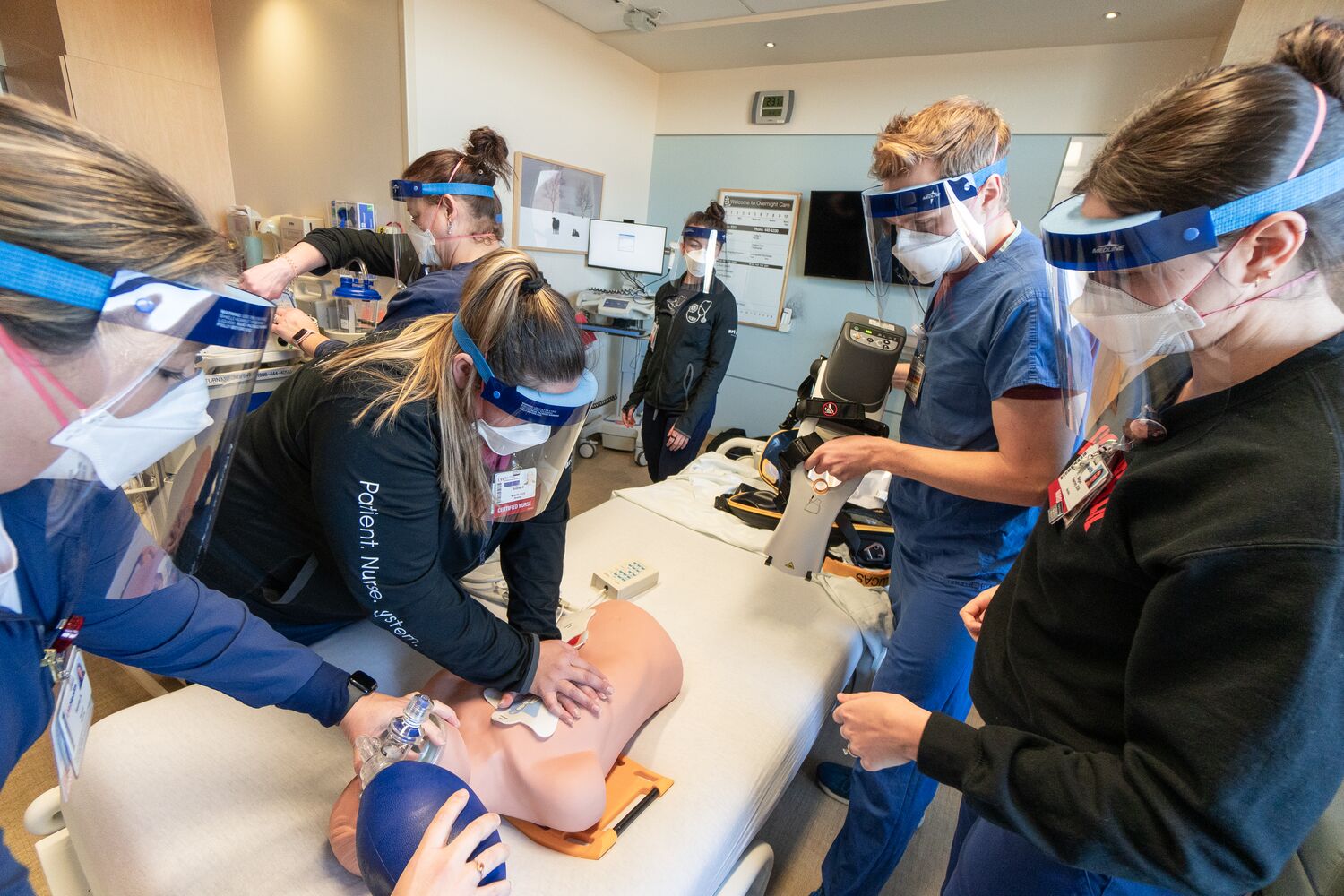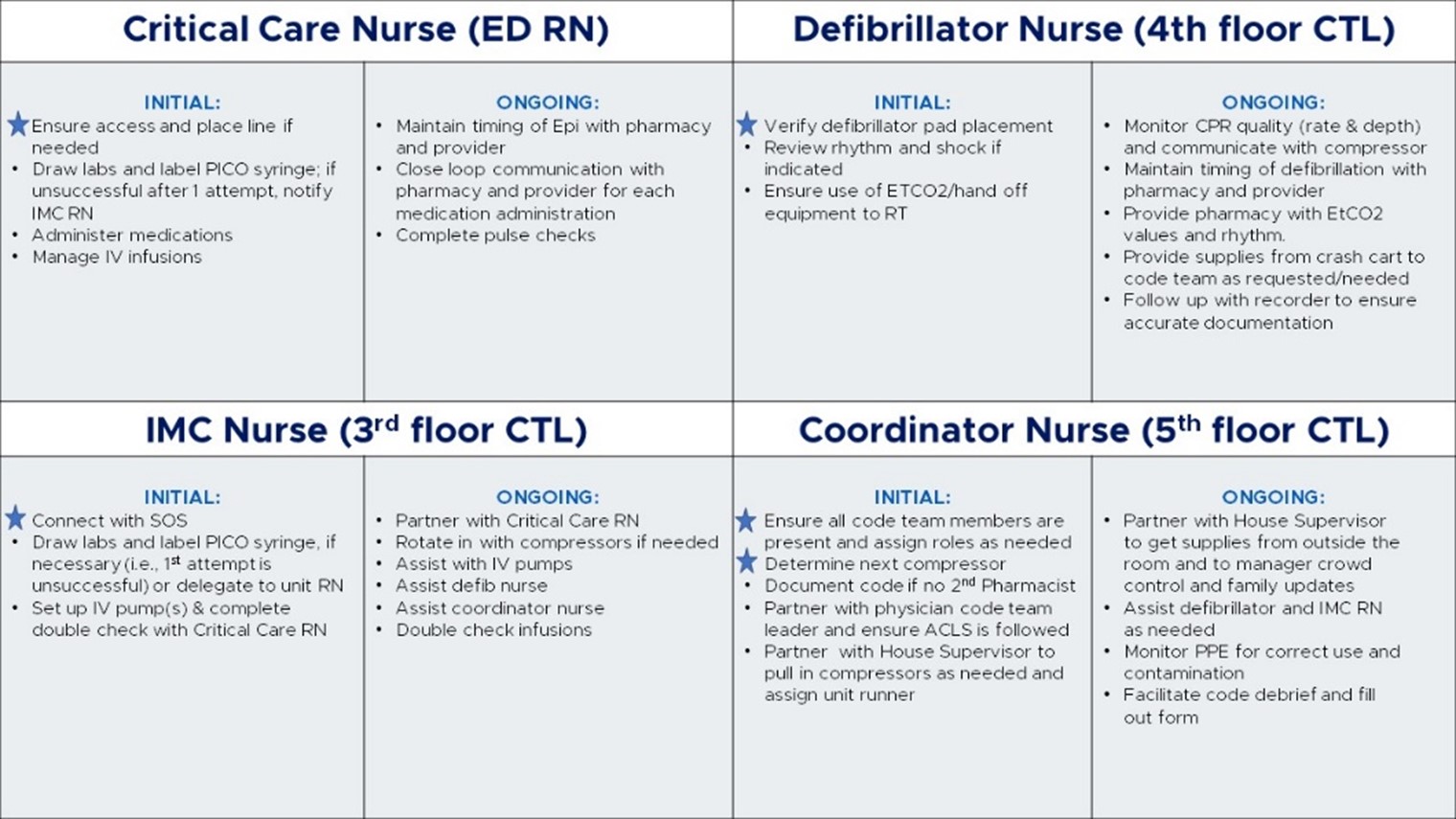RN code roles bring confidence

In the inpatient environment, it’s inevitable that nurses will experience a code at some point. While an understandable amount of stress accompanies the team that flies into action, having a well-orchestrated process can help curb some of that anxiety.
And that is exactly what Laurel Mitmoen, MSN, RN, nursing education specialist, set out to do when she created specific RN code roles.
“When we saw University Hospital pilot the RN code roles with great success, we immediately wanted to adopt the practice at East Madison Hospital,” said Kristen Stine, nurse manager. “Because we don’t have a lot of codes on our inpatient units, the staff has expressed unease and asked for more education and direction.”
Laurel was happy to help.
“I thought it was a great idea because there are so many benefits to adopting the standardized model,” Laurel stated. “Codes can be understandably chaotic — there’s no pulse, no breathing — and advanced lifesaving care is needed. Having defined roles for each person involved, brings some calm to the process and helps RNs feel more confident, knowing what they’re expected to do when they get in the room.”
Because the shifts and volume of resources vary at East Madison Hospital — day shift to night shift and weekday to weekend — the challenge was to establish standardization and structure that would meet all shift needs with the available resources. Four established code roles and associated tasks helped achieve that:
- Critical care nurse (emergency department RN)
- Defibrillator nurse (4th floor care team leader)
- Intermediate care nurse (3rd floor care team leader)
- Coordinator nurse (5th floor care team leader)
To prepare for the new roles, Laurel, Kristen, along with Andrea Mckenna, clinical nurse specialist at East Madison Hospital, developed a training program that includes interdisciplinary mock codes. The program went live in September 2023, therefore, specific outcome data is still being collected given the low number of codes at the hospital. However, as a result of the training, nurses demonstrated a 37% increase in knowledge in locating critical supplies and a 19% increase in awareness of code leader roles.
RNs who attended the training also provided positive feedback about the value of the training, being able to go through the code cart and how the training content applied to real-life experiences.
“These defined roles have allowed our nurses serving in code roles to have more focused tasks during a stressful situation, which will likely translate into increased confidence and hopefully strong patient outcomes,” Kristen said.

Check out more stories featuring the great work of our nurses in the 2023 Nursing Year in Review (pdf).
